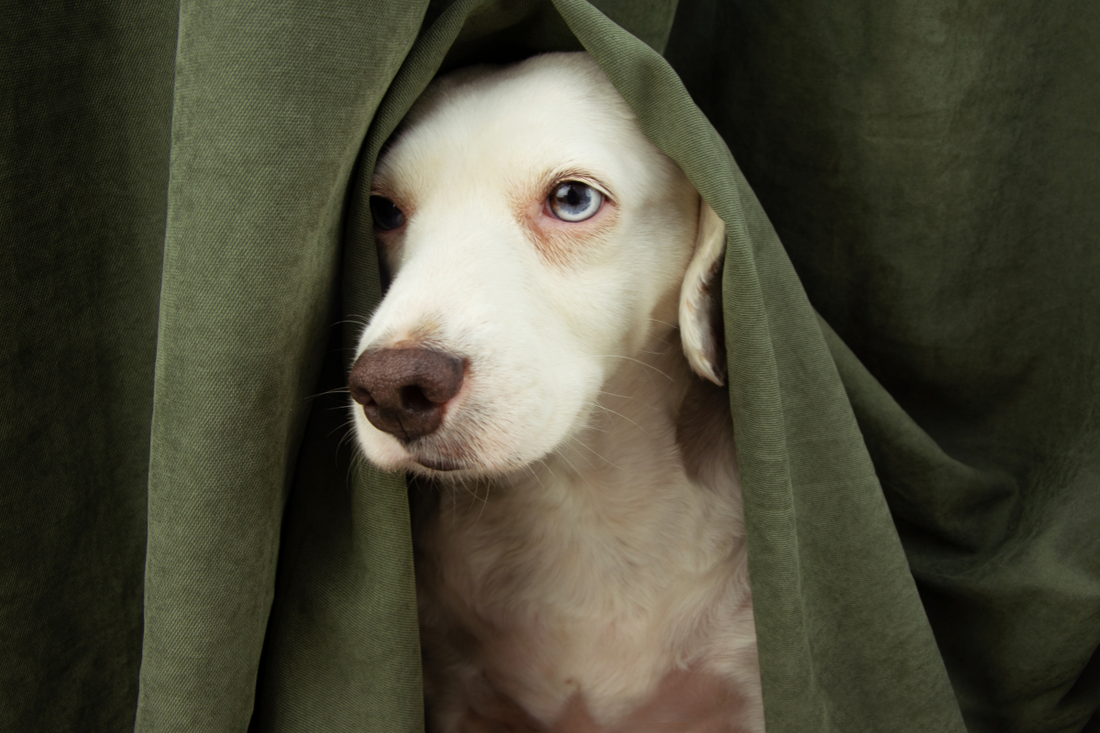Does Your Dog Feel Scared During Training Sessions?

Just like humans, dogs can also feel scared during walks or training sessions.
Dogs that were well-socialized as puppies—meaning they were exposed early on to various sights, sounds, and experiences—are generally more comfortable and adaptable during training.
However, no matter how much socialization they had as puppies, a dog’s breed characteristics and individual personality can still affect how they react to stressful situations. Here are some things that might stress your dog during training.
Why Do Dogs Get Nervous? Here's why...
1. You Maybe Teaching New Techniques

When introducing new techniques during training, it's crucial to consider your approach and your dog's comfort. Pay attention to how you interact with your dog and their space. Actions like leaning over your dog or moving towards them to teach tricks or commands might make them feel uneasy or scared. Your body language can significantly impact their comfort level.
Keeping a calm during training is essential. Avoid getting frustrated or raising your voice, as dogs are very receptive to human emotions. Staying composed and confident helps your dog cope with stress more effectively. Dogs pick up on your energy, so if you're calm, they're more likely to stay calm too.
Use positive reinforcement in your training. This method rewards your dog for correct behavior, encouraging them to form and sustain positive feelings about training. Positive reinforcement could involve treats, praise, or other rewards that show your dog they are doing well. It’s about making training a fun and rewarding experience for your pup.
2. Environment Stressors

Dogs may also worry because of external factors that are new to them. Training in a new area can be overwhelming or distracting, especially if it’s filled with unfamiliar sights, sounds, or smells.
Working in familiar environments with unfamiliar people or dogs can also cause stress. Unexpected changes in the environment, like a thunderstorm passing through, can add to their anxiety.
When introducing your dog to a new training environment, try to do so gradually. Spend some time letting them explore the area at their own pace before starting the training session. This can help them feel more comfortable and less anxious.
3. Increasing Training Difficulty Level

Sometimes, moving too fast in training can confuse your dog. They might not understand what you expect from them and respond with fear. It’s important to break down commands and tricks into smaller, manageable steps.
Introducing new items too abruptly can also scare them. It’s better to bring in equipment or props slowly. For instance, if you're training for agility, start with jumps at low heights to make them less daunting.
Once your dog feels comfortable with the lower jumps, you can gradually increase the height to the standard level. Always make sure new training tools are introduced in a positive and fun way.
What if My Dog Still Feel Scared?

to them in a happy voice and move them away from what scares them, using treats to help. Let them do an easy, fun trick like "sit" or "wave," give them lots of treats, and end the session on a happy note. The goal is to ensure they leave the training session with a positive experience.
Allow your dog to check out scary things at their own speed and give them treats if they show interest from a safe spot. Don't force them closer to what scares them, as it might make their fear worse. Gradual desensitization is key. Start by rewarding them for simply being in the presence of the scary object, then slowly decrease the distance over time as they get more comfortable.
In future training sessions, slowly help your dog get used to the scary thing little by little, mixing this with fun things like treats or toys. Start in places they feel safe if they're nervous in new spots. Gradually increasing the challenge can help them build confidence without overwhelming them.
Extra Tips for a Comfortable Training Session
When training your puppy, their comfort matters too. A poorly fitting harness can cause discomfort and even hair loss. The Joyride Harness fits well, preventing rubbing and discomfort, so you and your dog can enjoy long walks without worry. Make sure any training gear you use is comfortable and doesn’t cause any physical discomfort.
Also, consider the timing of your training sessions. Dogs, like humans, have times of the day when they are more energetic and times when they are more relaxed. Try to schedule training sessions when your dog is alert and ready to learn, rather than when they are tired or overly energetic.
Remember, pushing your dog through their fears doesn’t work and might make them shy or snappy. Keep training easy and fun for them. Training should be a positive bonding experience, not a stressful ordeal.
When training your puppy, their comfort matters too. A poorly fitting harness can cause discomfort and even hair loss. The Joyride Harness fits well, preventing rubbing and discomfort, so you and your dog can enjoy long walks without worry.





















